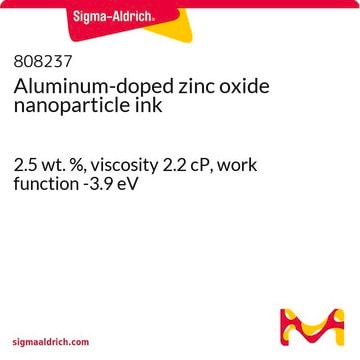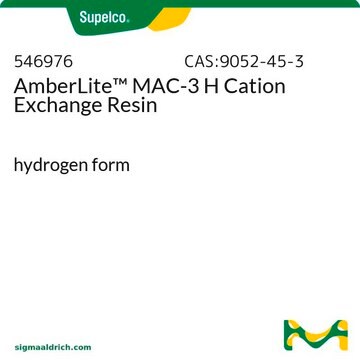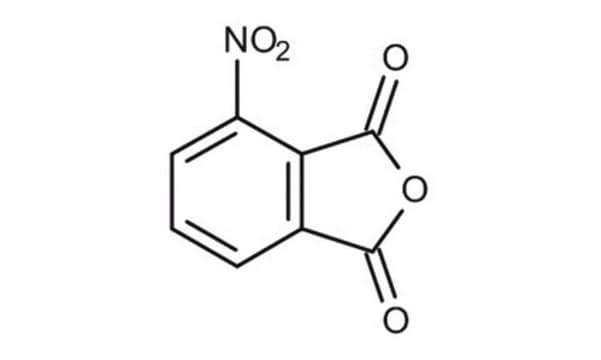289744
Cerium(IV) oxide, dispersion
20 wt. % colloidal dispersion in 2.5% acetic acid, 30-50 nm avg. part. size
Sign Into View Organizational & Contract Pricing
All Photos(2)
About This Item
Linear Formula:
CeO2
Molecular Weight:
172.11
MDL number:
UNSPSC Code:
12352303
PubChem Substance ID:
NACRES:
NA.23
Recommended Products
form
dispersion
reaction suitability
reagent type: catalyst
core: cerium
greener alternative product characteristics
Design for Energy Efficiency
Learn more about the Principles of Green Chemistry.
sustainability
Greener Alternative Product
avg. part. size
30-50 nm
pH
~2.7
viscosity
10 cP(lit.)
density
1.22 g/mL at 25 °C
greener alternative category
SMILES string
O=[Ce]=O
InChI
1S/Ce.2O
InChI key
CETPSERCERDGAM-UHFFFAOYSA-N
Looking for similar products? Visit Product Comparison Guide
General description
We are committed to bringing you Greener Alternative Products, which adhere to one or more of The 12 Principles of Greener Chemistry. This product is intended for Molecular Solar Thermal Energy Storage Systems (MOST) and has been enhanced for energy efficiency. Click here for more information.
Storage Class Code
10 - Combustible liquids
WGK
WGK 1
Flash Point(F)
Not applicable
Flash Point(C)
Not applicable
Personal Protective Equipment
dust mask type N95 (US), Eyeshields, Gloves
Choose from one of the most recent versions:
Already Own This Product?
Find documentation for the products that you have recently purchased in the Document Library.
Customers Also Viewed
Yilin Zhao et al.
Chembiochem : a European journal of chemical biology, 21(15), 2178-2186 (2020-03-18)
Nanoceria (CeO2 nanoparticles) is an extensively studied nanozyme with interesting oxidase-mimicking activity. As they can work in the absence of toxic and unstable H2 O2 , CeO2 nanoparticles have been widely used in biosensing. CeO2 nanoparticles often encounter phosphate-containing molecules
Dengsong Zhang et al.
Nanoscale, 5(3), 1127-1136 (2013-01-04)
The MnO(x) and CeO(x) were in situ supported on carbon nanotubes (CNTs) by a poly(sodium 4-styrenesulfonate) assisted reflux route for the low-temperature selective catalytic reduction (SCR) of NO with NH(3). X-Ray diffraction (XRD), transmission electron microscopy (TEM), high-resolution TEM (HRTEM)
Susmita Bandyopadhyay et al.
Journal of hazardous materials, 241-242, 379-386 (2012-10-23)
Cerium oxide (CeO(2)) and zinc oxide (ZnO) nanoparticles (NPs) are extensively used in a variety of instruments and consumer goods. These NPs are of great concern because of potential toxicity towards human health and the environment. The present work aimed
Gao Li et al.
Chemical communications (Cambridge, England), 48(98), 12005-12007 (2012-11-07)
The Au(25)(SR)(18)/CeO(2) nanocluster catalyst showed high activity in the homocoupling of aryl iodides (e.g. up to 99.8% yield with iodobenzene) and excellent recyclability.
Peng Zhang et al.
ACS nano, 6(11), 9943-9950 (2012-10-27)
Biotransformation is a critical factor that may modify the toxicity, behavior, and fate of engineered nanoparticles in the environment. CeO(2) nanoparticles (NPs) are generally recognized as stable under environmental and biological conditions. The present study aims to investigate the biotransformation
Our team of scientists has experience in all areas of research including Life Science, Material Science, Chemical Synthesis, Chromatography, Analytical and many others.
Contact Technical Service









